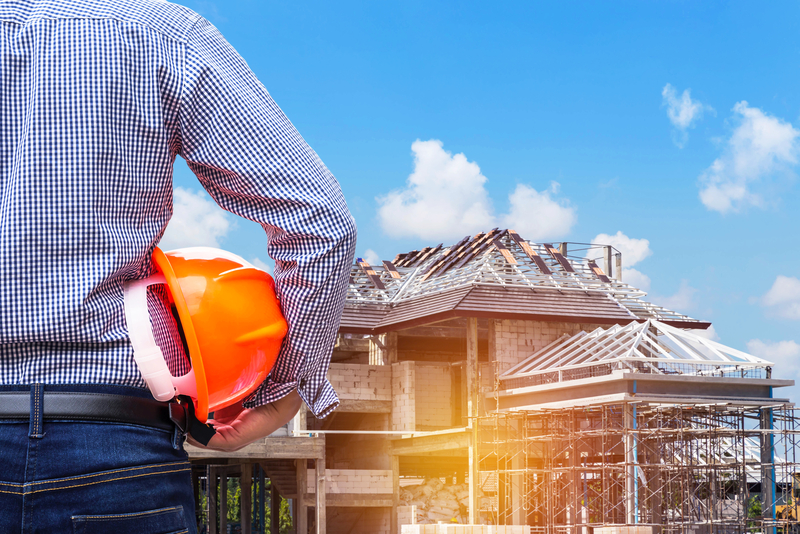Engaging in roofing activities, encompassing tasks such as installation, repairs, or general maintenance, presents a series of inherent risks. The nature of working at elevated heights, coupled with the necessity to maneuver and transport heavy and sometimes cumbersome materials, as well as the vulnerability to varying weather conditions, significantly escalates the potential dangers. Although professional roofing contractors are equipped with the knowledge and training required to mitigate these risks effectively, it is imperative for homeowners, property managers, and anyone in a position of responsibility for roofing endeavors to possess a thorough understanding of critical safety protocols. This detailed guide aims to highlight key safety tips, emphasizing proactive measures designed to safeguard the well-being of everyone involved in roofing projects. By adhering to these guidelines, individuals can ensure a safer working environment, reducing the likelihood of accidents and injuries.

Comprehending the Associated Hazards
The initial step towards guaranteeing safety during roofing operations is a comprehensive understanding of the inherent risks. While falls represent the most prevalent form of accidents in the field, other significant dangers include injuries resulting from the use of tools, the strain of lifting heavy materials, electrical hazards, and the challenges posed by inclement weather conditions. A clear recognition of these potential threats is crucial for meticulous planning and the safe execution of any roofing task.
Engagement of Skilled Professionals
The paramount piece of advice for those contemplating any form of roof work is the engagement of skilled professional roofing contractors. Such professionals boast not only extensive training and experience but also possess the necessary equipment to execute the job with a high degree of safety and efficiency. Moreover, their familiarity with local building codes and regulations ensures that all roofing work is conducted in compliance with legal standards and is accurately documented.
In-depth Safety Training and Adequate Equipment
Professional roofers are subject to comprehensive safety training protocols and are outfitted with essential personal protective equipment (PPE). This gear includes, but is not limited to, protective helmets, gloves, footwear designed to prevent slips, and most critically, equipment for fall protection like harnesses and safety nets. It is vital to verify that the roofing team you engage practices these safety standards rigorously.
Thorough Roof Evaluation
Prior to the commencement of any roofing project, it is imperative that a detailed inspection of the roof be carried out by qualified professionals. This preliminary evaluation is aimed at identifying any potential hazards, such as areas of weakness, loose shingles or tiles, and verifying that the structure is capable of safely supporting the weight of the workforce and their equipment. This step is essential in mitigating risks and ensuring the safety of all individuals involved in the roofing process.
Navigating Weather-Related Risks
The impact of weather on roofing safety cannot be understated, as it plays a critical role in the overall safety of roofing operations. Engaging in roofing activities during adverse weather conditions, such as rain, high winds, or extreme heat or cold, not only elevates the risk of falls and other related accidents but can also adversely affect the integrity and quality of the roofing work. It is essential to monitor weather forecasts closely and plan roofing tasks accordingly to avoid these risks.
Ladder Usage Protocols
The use of ladders is fundamental in roofing operations, making their safe deployment a matter of utmost importance. It is essential to ensure that ladders are in prime condition, securely anchored, and extend a minimum of three feet beyond the roof edge to facilitate safe and straightforward access. Adhering to the principle of maintaining three points of contact when ascending or descending a ladder is crucial for preventing falls.
Securing the Worksite
Ensuring the security of the area surrounding the roofing project is crucial to prevent unauthorized access and to safeguard individuals from potential hazards, such as falling debris. Employing safety signage and physical barriers is an effective strategy for clearly marking and securing the work zone.
Electrical Hazard Prevention
Awareness of overhead power lines and potential electrical hazards is vital when working on roofs. Given that metal ladders and certain roofing materials are conductive, they present a substantial risk of electrical shock. Keeping a safe distance from power lines and opting for non-conductive ladder materials are prudent measures to mitigate the risk of electrical accidents.
Emergency Preparedness
Having a comprehensive emergency plan in place is critical for effectively managing accidents or health emergencies that may arise during roofing projects. This plan should include detailed procedures for responding to emergencies, ensuring that all workers are well-informed about the plan and know how to promptly access first aid and emergency services when necessary. This level of preparedness is key to ensuring a swift and efficient response in the event of an emergency.
Emphasizing Regular Breaks and Adequate Hydration
Given the physically strenuous nature of roofing work, it’s imperative to acknowledge the risks of dehydration and heat-related illnesses, particularly during warmer seasons. It’s advisable to promote the practice of taking regular breaks and ensuring easy access to drinking water for all workers. Additionally, organizing the work schedule to take advantage of the cooler parts of the day can further mitigate these risks, ensuring the health and safety of the workforce.
Implementing a Post-Work Inspection Protocol
Conducting a thorough inspection upon the completion of roofing tasks is crucial for ensuring the safety and integrity of the work performed. This final check serves to ascertain that the roof is secure and that all equipment, tools, and materials have been appropriately secured or removed from the site. Such diligence helps in preventing future accidents that could arise from the neglect of leftover debris or unsecured tools.
Commitment to Ongoing Safety Education
The field of roofing safety is ever-evolving, with continuous advancements in safety standards and regulatory requirements. It is vital for professionals within the industry, as well as homeowners and property managers, to engage in ongoing education regarding these updates. Being well-informed about the latest in roofing safety practices enables all parties to ensure that roofing projects are executed with the highest degree of safety and responsibility.
Concluding Thoughts on Roofing Safety
The importance of roofing safety cannot be overstated, demanding the attention and commitment of all individuals involved in the roofing process — from the homeowners and property managers to the skilled professionals executing the work. Understanding the inherent risks, selecting qualified professionals for the job, and rigorously adhering to established safety protocols are fundamental steps in minimizing the potential for accidents and injuries. The overarching objective is to safeguard not only those directly involved in the roofing operations but also to protect the well-being of everyone in the vicinity of the worksite. By placing a premium on safety measures, we can ensure that roofing projects are completed in a manner that is not only efficient and effective but also free from preventable incidents.

